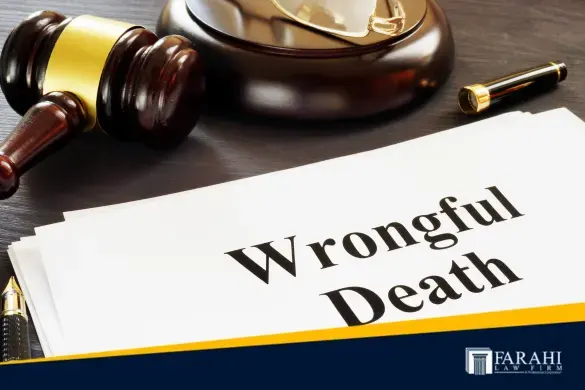Negligence plays a pivotal role in California wrongful death cases, serving as the legal basis for holding the responsible party accountable for their actions or inactions that led to the death of another person. In these cases, negligence refers to a failure to exercise reasonable care, resulting in harm or injury to another individual.
Establishing negligence is crucial for demonstrating liability and recovering compensation for the loss of a loved one. This article will explore the role of negligence in California wrongful death cases, including its elements, how it is proven, and its significance in seeking justice for the deceased and their surviving family members.
Elements of Negligence
The concept of negligence in situations involving wrongful death in the state of California is comprised of four essential components: duty of care, breach of duty, causation, and damages. The legal responsibility that persons have to behave reasonably and to prevent causing damage to other people is referred to as the duty of care. A person is said to have committed a breach of duty when they fail to fulfill this commitment by behaving in a manner that is either negligent or reckless.
By establishing the connection between the defendant’s breach of duty and the death of the victim, the concept of causation demonstrates that the defendant’s carelessness was the direct cause of the final result, which was deadly. Last but not least, damages are the losses that the surviving members of the victim’s family have endured as a consequence of the victim’s death. These losses include financial, emotional, and psychic trauma.
Proving Negligence
Proving negligence in a California wrongful death case requires presenting evidence that satisfies each element of the negligence claim. This evidence can include eyewitness testimony, medical records, accident reconstruction reports, expert testimony, and other relevant documentation. Eyewitnesses and experts can provide insights into the circumstances surrounding the incident and the actions of the parties involved.
Medical records can demonstrate the extent of the victim’s injuries and the cause of death. Accident reconstruction reports can help establish how the incident occurred and who was at fault. The plaintiff can build a strong negligence case by compiling and presenting this evidence.
Comparative Negligence
In some cases, more than one party can share responsibility for the wrongful death due to their negligent actions. California follows the doctrine of comparative negligence, which allows the court to apportion fault among multiple parties based on their degree of responsibility for the incident. Under comparative negligence, the plaintiff’s recovery can be reduced in proportion to their degree of fault.
However, they are still entitled to compensation as long as they are not primarily responsible for the incident. This legal principle ensures that each party bears responsibility for their actions and that fault is allocated fairly in wrongful death cases.
Significance in Seeking Justice with the Help of Lawyer
In cases of wrongful death in California, the significance of seeking justice cannot be overstated, and it often necessitates the expertise of a California wrongful death lawyer. These legal professionals play a pivotal role in advocating for the rights of surviving family members and holding negligent parties accountable for their actions.
By consulting with a wrongful death lawyer, families can navigate the complexities of the legal system with confidence and pursue the compensation they deserve for their loss. With their knowledge of relevant laws and experience in handling wrongful death cases, these lawyers serve as invaluable allies in the pursuit of justice. Ultimately, seeking the assistance of a wrongful death lawyer ensures that families have the support and representation needed to achieve closure and begin the healing process.
Conclusion
Negligence is a central concept in California wrongful death cases, providing the legal framework for establishing liability and seeking compensation for the loss of a loved one. By demonstrating that the defendant breached their duty of care, directly causing the victim’s death and resulting in damages to the surviving family members, plaintiffs can build a strong negligence case.
Understanding the elements of negligence, gathering compelling evidence, and navigating the legal process with the assistance of an experienced attorney are essential steps in pursuing justice in wrongful death cases. Through the pursuit of legal action, grieving families can hold negligent parties accountable and obtain the closure and financial support they need to move forward after a tragic loss.
Read more. https://dropshipinsight.com

